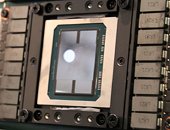- Joined
- Oct 9, 2007
- Messages
- 47,670 (7.43/day)
- Location
- Dublin, Ireland
| System Name | RBMK-1000 |
|---|---|
| Processor | AMD Ryzen 7 5700G |
| Motherboard | Gigabyte B550 AORUS Elite V2 |
| Cooling | DeepCool Gammax L240 V2 |
| Memory | 2x 16GB DDR4-3200 |
| Video Card(s) | Galax RTX 4070 Ti EX |
| Storage | Samsung 990 1TB |
| Display(s) | BenQ 1440p 60 Hz 27-inch |
| Case | Corsair Carbide 100R |
| Audio Device(s) | ASUS SupremeFX S1220A |
| Power Supply | Cooler Master MWE Gold 650W |
| Mouse | ASUS ROG Strix Impact |
| Keyboard | Gamdias Hermes E2 |
| Software | Windows 11 Pro |
It looks like NVIDIA won't skip the 14 nm process en route sub-10 nm nodes, despite meeting its energy-efficiency targets with the 16 nm FinFET node, after all. The company has reportedly concluded talks with Samsung Electronics, to optically-shrink its current GeForce "Pascal" architecture down to the newer 14 nanometer FinFET node, by Samsung. It's unclear as to whether specific upcoming (unreleased) Pascal GPUs will get 14 nm treatment, or if this is a series-wide die-shrink of the kind NVIDIA did between the 65 nm and 55 nm nodes. The Samsung-made 14 nm "Pascal" GPUs should enter production before year-end.

View at TechPowerUp Main Site

View at TechPowerUp Main Site




